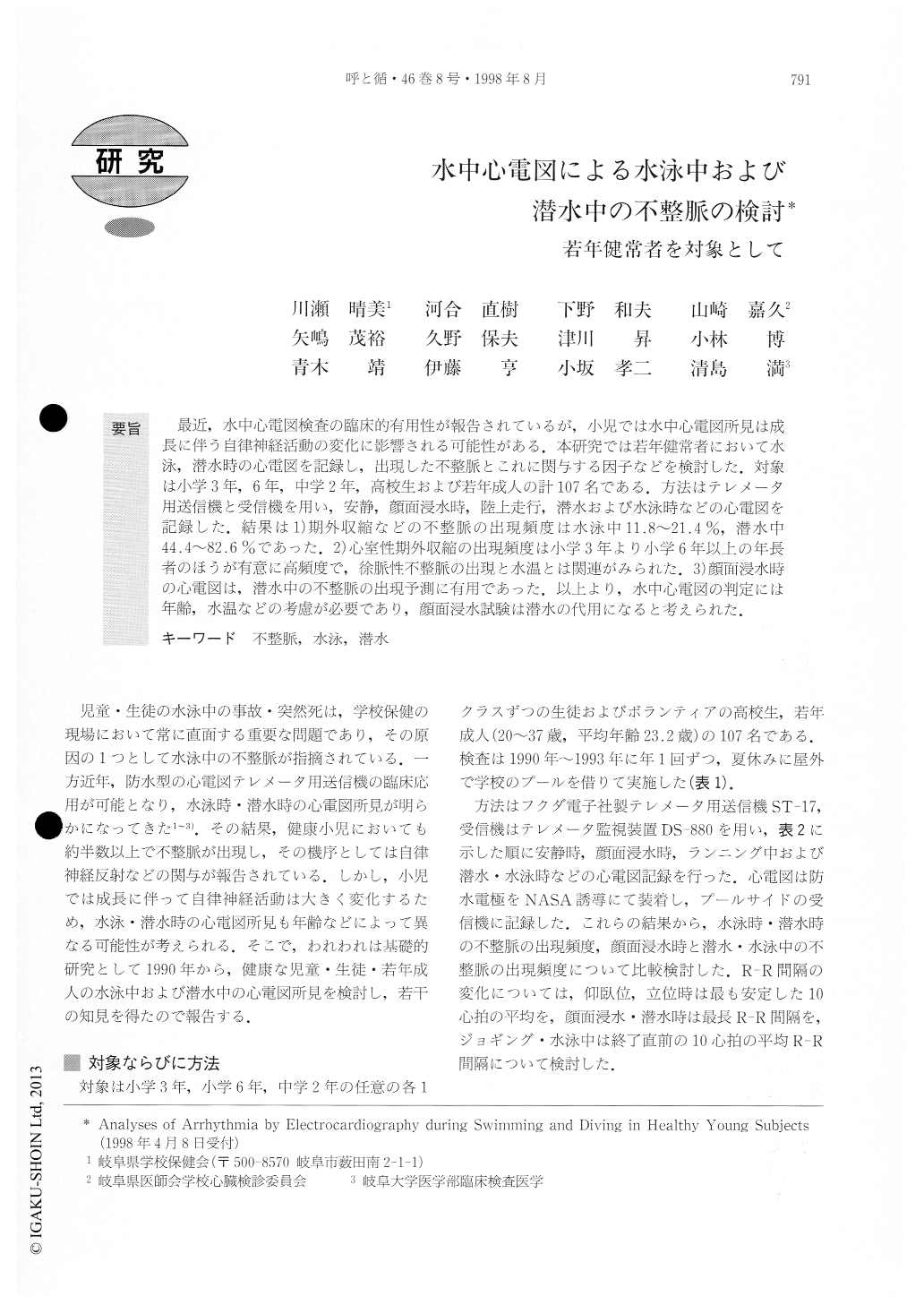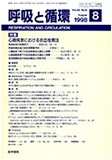Japanese
English
- 有料閲覧
- Abstract 文献概要
- 1ページ目 Look Inside
最近,水中心電図検査の臨床的有用性が報告されているが,小児では水中心電図所見は成長に伴う自律神経活動の変化に影響される可能性がある.本研究では若年健常者において水泳,潜水時の心電図を記録し,出現した不整脈とこれに関与する因子などを検討した.対象は小学3年,6年,中学2年,高校生および若年成人の計107名である.方法はテレメータ用送信機と受信機を用い,安静,顔面浸水時,陸上走行,潜水および水泳時などの心電図を記録した.結果は1)期外収縮などの不整脈の出現頻度は水泳中11.8〜21.4%,潜水中44.4〜82.6%であった.2)心室性期外収縮の出現頻度は小学3年より小学6年以上の年長者のほうが有意に高頻度で,徐脈性不整脈の出現と水温とは関連がみられた.3)顔面浸水時の心電図はは潜水中の不整脈の出現予測に有用であった.以上より,水中心電図の判定には年齢,水温などの考慮が必要であり,顔面浸水試験は潜水の代用になると考えられた.
The clinical usefulness of the water-proof ECG sys-tem has been recently reported, but, the autonomic nervous system possibly influences ECGs during swim-ming and diving especially in growing children. To evaluate the change with growth on the electrocardio-graphic (ECG) findings during swimming and diving, we recorded ECGs in healthy children and young adults using the water proof ECG system.
Subjects were 107 healthy males and females consist-ing of five age groups: a) 9 years old, b) 12 years old, c)14 years old, d)17 years old, and f) 20~37 years old. We recorded ECGs by the telemeter system at rest, and during facial immersion, running, diving and swimming.
The following results were obtained: 1) prevalence of arrhythmias such as ventricular or supraventricular premature beats (VPCs or SVPCs) were 11.8~21.4 % during swimming, and 44.4~82.6% during diving in each age group. 2) Prevalence of VPCs was lower in the group of 9-year-old children than in other elder groups and a close relationship was shown between prevalence of bradycardial arrhythmias and water temperature. 3) ECG findings during face immersion showed high predic-tive values for arrhythmias induced by diving. It was concluded that age and water temperature should be considered in analysis of electrocardiography during swimming and diving, and face immersion was useful for predicting the occurrence of arrhythmias during diving.

Copyright © 1998, Igaku-Shoin Ltd. All rights reserved.


